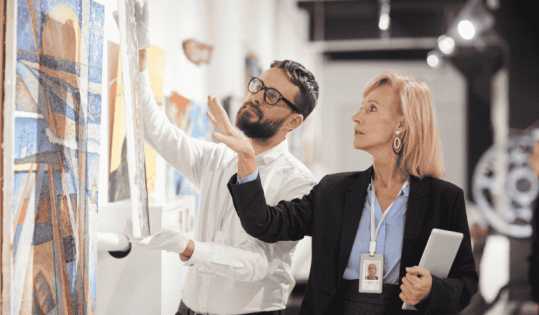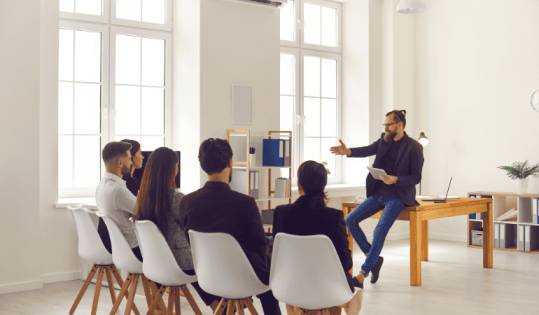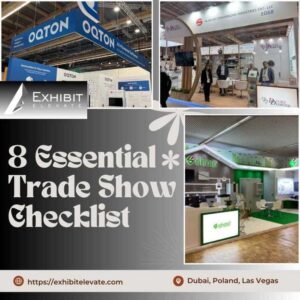A well-designed booth can get people to look at it, but it’s your trade show staff that really makes the difference at trade shows and exhibitions. No matter how creative your booth exhibit arrangement is, it won’t work if the individuals running it don’t know how to get people interested, start conversations, and represent your company well. That’s why one of the most important things you can do before any event is to teach the people who will be working at your trade show booth.
Your booth staff are more than simply workers; they are also representatives of your brand. They set the mood for visitors at trade events, industry exhibits, and conference booths. With the right training, they will know how to act at trade shows, answer inquiries with confidence, and leave a lasting impression on attendees.
In this article, we’ll talk about how to get your crew ready for the trade show, give tips for making the most of your exhibit, and explain why preparation is the key to success for trade show.
Why it's important to train your staff for booth success
Trade show visitors don’t have much time and there are a lot of booths trying to get their attention. If your trade show workers look like they don’t want to talk to you, are too busy, or aren’t ready, potential leads will go to the next exhibitor. A well-trained team, on the other hand, can:
- Get people to come to your booth and stay there.
- Make sure brand messages are clear.
- Have confident talks to build trust.
- Turn casual visitors into good leads.
Exhibit Elevate and other brands know that having eye-catching booths isn’t enough to be successful in a congested exhibition hall. They also need to make sure that the personnel inside them can provide great experiences.
Key Areas of Trade Show Staff Training
1. Mastering Trade Show Etiquette
The first and most important part of educating trade show booth staff is teaching them how to behave. People may come to your booth because of the design, but the behavior of your workers will keep them there. People make quick judgments, and how you act, speak, and move can have a big effect on those judgments. A warm greeting, direct eye contact, and a professional yet friendly demeanor can all help establish the tone for a good conversation right away. On the other side, body language that is closed off, such crossed arms or a blank look, might push people away before a conversation even starts.
Teaching your team how to behave during trade shows will help them learn how to look friendly, lively, and interested. Staff should also stay away from unprofessional things like checking their phones, eating while on duty, or talking to coworkers when guests are close. These little mistakes can show that you’re not interested and make people less likely to get involved. Instead, you may make your booth even more inviting by teaching them how to stay focused, listen carefully, and help out at the proper times. These tiny but important habits help develop trust, credibility, and better relationships with attendees over time.
2. Clear Communication Skills
One of the most important parts of educating exhibition stand staff is teaching them how to communicate well. People who go to trade exhibitions and conferences don’t usually have more than a few minutes to spend at each booth. That means your employees need to be able to tell your company’s narrative quickly, effectively, and convincingly. It starts with making a “elevator pitch,” which is a brief, clear introduction that tells the visitor who your organization is, what it does, and why it matters. With this base, your staff may talk to guests with confidence without giving them too much information.
But communication isn’t just about sending information; it’s also about listening. Trade show Staff should learn how to start discussions by asking open-ended inquiries that help them find out what the visitor needs, what problems they are having, or what they are interested in. They can then tweak their comments and make the interaction more meaningful. This tailored approach not only keeps visitors interested, but it also makes your brand look like it cares about its customers. In a competitive trade show setting, a staff that can speak clearly, with empathy, and with confidence will always have a bigger effect.

3. Knowledge of products and services
If your booth personnel doesn’t know a lot about the products or services they’re selling, no matter how good they are at talking to people, their efforts will be useless. People who visit a trade show stand expect to get timely, accurate, and dependable information. If staff members seem unsure or hesitant, it might quickly lose their trust. So, full training should include product demos, descriptions of the most important features and benefits, and responses to common queries or objections. Employees that know what they’re talking about are more likely to make clients feel confident.
Doing practical tasks can really help you learn about a product. For instance, role-playing workshops where staff members take turns acting like visitors with hard inquiries can help them get better at their jobs. This kind of training for booth staff makes sure that when they get real questions, they answer them in a seamless and professional way. People are much more likely to remember your brand and keep talking about it after the event if they leave your booth feeling informed and understood.
4. Qualifying leads and gathering data
Not everyone who comes to your booth is a good lead, and one of the best things about trade show training is that it teaches personnel how to discern which attendees are real business potential. This means teaching them how to ask thoughtful, open-ended questions that show what the visitor does, what they need, and how much authority they have to make decisions. Staff should learn to rapidly tell the difference between decision-makers, influencers, and casual browsers. This will make sure that the team’s time and attention are spent on the proper people.
Data capturing that is both accurate and quick is just as vital. Too many businesses lose important leads because they didn’t write down the right contact information or didn’t write it down at all. Trade show Staff needs to know how to use lead capture methods, including digital apps, tablets, or paper forms, in a way that looks and feels professional. Your trade show booth workers may make sure that post-show follow-ups are focused and useful by combining careful qualifying with accurate data gathering. This can greatly increase the return on your trade show investment.
5. Dealing with hard situations
No matter how well you plan, there will always be problems at trade exhibitions. Visitors might not be happy, competitors might try to get critical information, or technical problems might make it hard to give presentations at the booth. If your workforce isn’t ready for these situations, the results could be embarrassing or even hurt your brand’s reputation. This is why training for trade show staff needs to include ways to deal with tough situations in a calm and professional way.
Training should stress how important it is to keep cool, polite, and focused on finding a solution when things get tough. Staff should know how to change the subject of a bad conversation, calm down a fight, and send problems to the correct person when they need to. Being ready in this area not only stops tiny problems from getting worse, but it also shows guests that you are strong and professional. In fact, dealing with a problem with elegance can sometimes leave a bigger impact than a normal interaction, demonstrating visitors that your business is capable, trustworthy, and reliable.
6. Managing time and roles
Trade shows move quickly, and even the finest teams can get disorganized if they don’t have a clear plan. So, training for booth personnel should include how to manage their time and their roles. This means giving each person on your team defined tasks so that everyone understands what to do during the event. For instance, greeters can greet guests, presenters can show off products, specialists can answer detailed questions, and record keepers can handle lead collecting and data input. This kind of arrangement makes everything clear and makes sure that no guest is left alone.
Role management also stops staff from competing for attention or doing the same thing twice. Visitors like it when their time at your booth is easy and focused. You may also help your team stay energized during long days by organizing shifts and rotations ahead of time. Good role management makes your booth work better, be more interesting, and be better at turning visitors into leads.

Practical Tips for Effective Trade Show Staff Training
Training personnel well means more than just theory. To get the best outcomes, start getting ready weeks in advance so your team has time to understand and practice what they’ve learnt. Role-playing games are a great method to practice real-life situations and boost your confidence. Staff have to stay friendly and eager all day at conference booths and exhibitions, so training should also include ways to control their energy.
Team-building exercises can also help people work together better throughout the event. When employees trust one other and talk to each other well, they make things easier and more fun for visitors. Giving staff handbooks, cheat sheets, or digital tools makes training more effective and offers them something to look back on if they need it. These simple procedures will make sure that the people working at your trade show exhibit are ready to do their best.
The Importance of Professional Help
Companies need to teach their own employees, but they also get a lot out of collaborating with experienced partners. Companies like Exhibit Elevate not only know how to build booths that are unique and make a big impression, but they also know how important it is to train your personnel to get the most out of their time at the event. They assist firms have a presence that is both attractive and effective at turning visitors into leads by combining expert booth design with strategic training for show stand staff.
This two-pronged approach makes sure that your booth does more than simply look good. It becomes a place where skilled staff interact with visitors, create meaningful memories, and make connections that last. Putting money into both design and training provides your brand an edge over the competition and makes sure that your trade show participation gets you the best return.
In conclusion
Your booth is the stage, and your employees are the actors who make your brand story come to life. Even the most eye-catching trade show booth won’t get results if the crew isn’t well-prepared and confident.
You may change how you act at conference booths and international trade shows by focusing on training your workers, teaching them proper trade show etiquette, and giving them the tools they need to communicate, know your products, and understand their roles.
Your booth doesn’t simply draw people in; it also helps workers interact, listen, and engage with them. Exhibit Elevate is one of the companies that puts a lot of emphasis on educating its employees. They know that the key to success at trade shows isn’t just turning up, but showing up ready.



